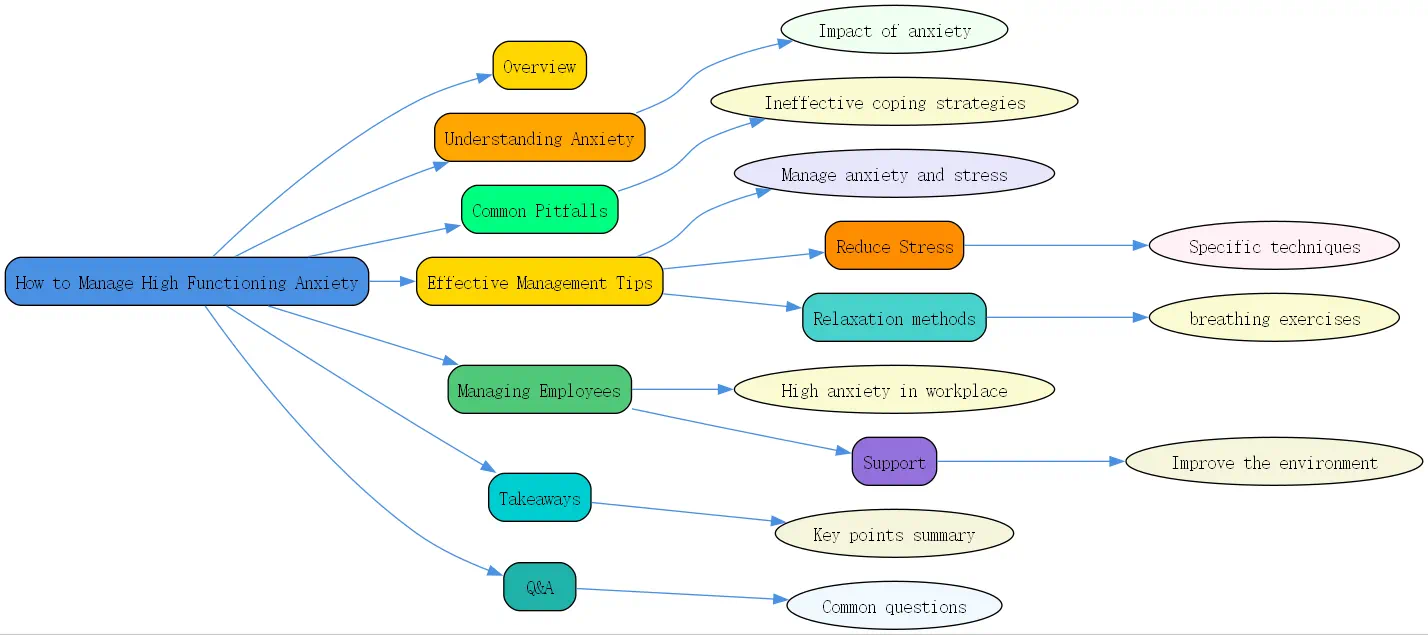How to Manage High Functioning Anxiety: A Comprehensive Guide

Understanding Anxiety and Its Impact
Anxiety is one of the most prevalent mental health challenges in today’s fast-paced, uncertain world. But what exactly is anxiety, and how does it manifest in daily life? To effectively learn how to manage high functioning anxiety, it’s important to break down its definition and understand its roots.
Defining Anxiety: The Intolerance of Uncertainty
At its core, anxiety stems from our inability to tolerate uncertainty. When life feels unpredictable or beyond our control, stress and fear creep in, amplifying feelings of worry and dread. For many, this intolerance manifests during large-scale societal changes like the pandemic. Coronavirus exposed vulnerabilities in our sense of security, leading to widespread unease revolving around the future, workplace changes, and social isolation.
The concept of “”uncertainty intolerance”” highlights a key challenge: feeling compelled to seek clarity when none may exist. Learning to embrace ambiguity can significantly reduce feelings of anxiety and is central to understanding how to navigate this mental health challenge effectively.
The Prevalence of Anxiety in Modern Life
Anxiety impacts people in different ways鈥攚hether it’s social anxiety from reduced opportunities to connect, workplace anxiety due to new job responsibilities, or future-related stress stemming from the unpredictability of modern life. Social shifts like remote work, developing global concerns, and interactions with technology have further shaped how people experience anxiety today.
Understanding these everyday triggers is pivotal in addressing high functioning anxiety. It allows us to frame our struggles as responses to external pressures and empowers us to take actionable steps toward healing.
The Subjective Origins of Anxiety: Nature vs. Nurture
Anxiety doesn’t often emerge from a single source鈥攊t stems from complex interplays between biological predispositions, learned behavior, and our early experiences.
- Genetic Predisposition: Research has long supported the idea that some individuals are genetically wired to experience heightened anxiety levels. For instance, if a parent has a history of severe anxiety, the likelihood of their child inheriting similar tendencies increases.
- Learned Behaviors from Anxious Caregivers: Growing up around caregivers who exhibit high anxiety can subconsciously teach children anxious behavioral patterns. Whether through avoidance strategies or exaggerated fears, learned habits shape how individuals cope with stress over time.
- Impact of Negative and Traumatic Early Life Experiences: Trauma plays an equally significant role in developing anxiety. Early experiences, such as abusive relationships or car accidents, can engrain deep-seated fears that persist well into adulthood. Understanding these roots is essential for addressing not only the symptoms but the underlying causes.
Common Pitfalls in Managing Anxiety
When faced with anxiety, many people unknowingly worsen their symptoms by falling into unhelpful habits. By identifying these missteps, you can uncover more effective ways to manage high functioning anxiety.
Hypersensitivity to Anxiety: Amplifying the Problem
For people with anxiety, heightened awareness of their feelings can trigger even more stress. For example, individuals may panic about “”feeling anxious again,”” exacerbating their symptoms. The constant focus on anxiety creates an unhealthy loop in the brain, teaching it to associate feelings of fear with even minor discomfort.
To curb hypersensitivity, focus on disruptive thought patterns. Recognize anxiety as a passing emotion rather than an unmanageable state. This mindfulness-based shift can help reduce its emotional impact.
Focusing Solely on Coping Strategies: Ignoring the Undercurrents
Coping strategies are essential in managing day-to-day anxiety, but they alone cannot address deeper issues. Many people focus exclusively on techniques like breathing exercises and physical activity, while neglecting the root causes. While such methods alleviate symptoms, ignoring underlying triggers limits long-term improvement.
True healing requires digging beneath surface-level fixes to understand emotional or situational sources. Therapy, journaling, and self-reflection can help uncover the deeper “”why.””
Continuously Avoiding Anxiety-Inducing Situations: Perpetuating Avoidance
Avoidance may seem like a workable solution, but it often contributes to long-term anxiety. For example, skipping social events to avoid discomfort reinforces the brain’s belief that such situations are dangerous. Over time, avoidance limits opportunities for growth and freedom, creating an isolating routine.

Instead of fleeing discomfort, aim to challenge it. Gradually expose yourself to feared situations in a controlled way鈥攕uch as attending small gatherings or speaking up in meetings鈥攖o rebuild confidence and reduce fear.
The Fear of Life Without Anxiety: A Perceived Need for Anxiety
One of the less-discussed challenges in managing anxiety is the fear of living without it. For those affected, anxiety can feel like a safety mechanism鈥攁 protective mental tool shielding them from potential harm. However, this dependence limits personal growth, as the individual may resist alternative strategies that offer greater emotional freedom.
Cultivating trust in yourself鈥攚ithout relying on anxiety鈥攊s one of the most empowering steps toward healing. Building self-confidence and focusing on life without unnecessary worry can help significantly.
Tips to Manage Anxiety and Stress Effectively
Learning how to manage high functioning anxiety and stress requires practical strategies tailored to unique circumstances. Below are actionable tips to regain control.
Challenging Avoidant Behaviors
Recognizing where avoidance is harming your progress is a critical first step. Break big challenges into manageable steps: instead of skipping an entire work meeting, volunteer to share smaller updates. Reward small victories to build momentum toward facing larger fears.
Addressing the Undercurrents
Anxiety management requires reflection. Spending time to understand your triggers, whether through therapy or subconscious exploration, offers deeper insight into patterns. Don’t be afraid to ask hard questions: Is anxiety tied to unresolved fears? Are negative experiences driving your reactions? Resolving these inner conflicts unlocks recovery.
Coping Strategies
Finally, incorporate effective coping skills into your daily routine. Whether it’s practicing mindfulness, engaging in exercise, or setting boundaries at work, these techniques ease the physical and emotional toll of anxiety. People looking for ways to handle both ADHD and anxiety can especially benefit from structured schedules, time-blocking techniques, and prioritization lists.
Managing High Anxiety Employees in the Workplace
Anxiety doesn’t just affect individuals鈥攊t impacts the workplace, too. Employers can play a role in managing high anxiety employees by creating nurturing environments that prioritize mental health.
Recognizing Signs of Anxiety in Employees
It’s essential to understand when an employee might be struggling. Symptoms include nervous behaviors, reduced productivity, and reluctance to participate in team activities. Recognizing these signs is the first step toward supporting their needs.
Implementing Strategies to Reduce Workplace Stress
Introduce initiatives that mitigate anxiety-inducing pressure, such as flexible schedules, stress management programs, or wellness benefits. Fewer rigid expectations contribute to stronger employee morale and lower overall stress levels.
Promoting Open Communication and Mental Health Awareness
Cultivate safe spaces where employees can share personal challenges without fear of retaliation or judgment. Open-door policies, mental health workshops, and one-on-one support can foster stronger collaboration and minimize emotional burdens.
Takeaways From This Guide
Here’s how you can start managing high functioning anxiety today:
- Cultivate tolerance for uncertainty rather than controlling outcomes.
- Address anxiety triggers through self-reflection and understanding the root causes.
- Opt for exposure over avoidance when encountering fear-inducing situations.
- Develop a balance between coping strategies and bigger-picture solutions.
- Employers should prioritize fostering supportive and anxiety-safe workplaces.

Q&A Section
Q: How does high functioning anxiety differ from more visible anxiety disorders? A: High functioning anxiety manifests differently from disorders that cause visible hardship, such as panic attacks or agoraphobia. People with high functioning anxiety may appear highly productive, organized, or calm externally, yet internally struggle with perfectionism, fear of failure, and a broad intolerance for uncertainty. Managing high functioning anxiety involves channeling inner productivity into healthier outlets while addressing internal thought patterns through therapeutic tools or self-care strategies.





